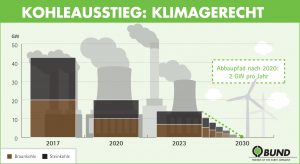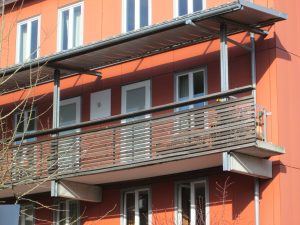The nationwide Forest and Wood Competence and Information Centre started its work on 1 January 2019.
At the beginning of the year, the Federal Ministry of Food and Agriculture (BMEL) gave the go-ahead for the
Competence and Information Centre Forest and Wood (KIWUH) under the umbrella of the Agency of Renewable Resources (Fachagentur Nachwachsende Rohstoffe e.V.). (FNR).
"With the Competence and Information Centre, we are bundling important tasks and competences in the field of forests and wood at one location. At the same time, we are creating further highly qualified jobs in rural areas in the new federal states" explains the Federal Minister of Food and Agriculture, Julia Klöckner, on the occasion of the opening of the KIWUH.
On behalf of the BMEL, the Competence Centre will support the FNR as project management agency for the funding programme Renewable Resources. In addition, the KIWUH is responsible for technical and consumer information on the topics of forests, sustainable forestry and wood use and their contribution to climate protection.
A second important funding pillar, which will be newly established in the KIWUH, is the project sponsorship of the FNR for the Forest Climate Fund, which is jointly managed by the BMEL and the Federal Ministry for the Environment, Nature Conservation and Nuclear Safety (BMU). This fund, established in 2013, is dedicated to the specific promotion of measures to adapt forests to climate change and to maintain and expand CO2-reduction potential of forests and wood.
The Competence and Information Centre, with a total of 41 employees, is a department within the FNR based in Gülzow-Prüzen in Mecklenburg. The head of the department is Marcus Kühling, a graduate forest scientist.
"The World Climate Conference in December 2018 has once again brought home to us the urgent need for action to preserve forest ecosystems and for a sustainable forestry and timber industry for the benefit of climate and species protection," says Marcus Kühling. "The forestry and timber sector is one of the key industries on the way to an economically, ecologically and socially sustainable society. Stable and naturally managed forests are not only an indispensable supplier of raw materials with a view to conserving and replacing finite resources. They are habitats for many protected animal and plant species and the most important recreational space for people."
Background:
With the Competence and Information Centre for Forests and Wood (KIWUH), the Federal Government is responding to the growing public need for information on issues of sustainable forest management and intelligent wood use identified in the Forest Strategy 2020 and the Climate Protection Plan 2050.
With the transfer of the project sponsorship for the "Forest Climate Fund" to the FNR, the KIWUH takes over a total of over 150 ongoing research projects with a funding volume of around 50 million euros.
(Further information under www.waldklimafonds.de)
From the Promotion programme "Renewable raw materials currently supports more than 100 projects aimed at strengthening sustainable forestry and safeguarding forest functions, as well as more than 70 other projects on sustainable timber management, with a total funding volume of around 25 million euros. Research fields here include, for example, the breeding of forest seeds that meet new climate and usage requirements, the development of strategies for optimising "near-natural silviculture" for the supply of raw materials, the development of environmentally friendly insulation and building materials based on the renewable raw material wood, or the social dialogue on the bioeconomy and sustainability.
The Agency for Renewable Resources has been active for 25 years as the BMEL's project management agency for the "Renewable Resources" funding programme. The FNR has been supporting research topics in the fields of sustainable forestry and innovative wood use since its foundation. Since 2016, the FNR has also been entrusted with the operational tasks of implementing the German Forest Days and the Charter for Wood 2.0. It also provides specialist information and public relations work.
Source: PM of the FNR from 3.1.2019
Keywords:
Stakeholders, Wood construction, Climate protection, News Blog Mecklenburg-Western Pomerania





